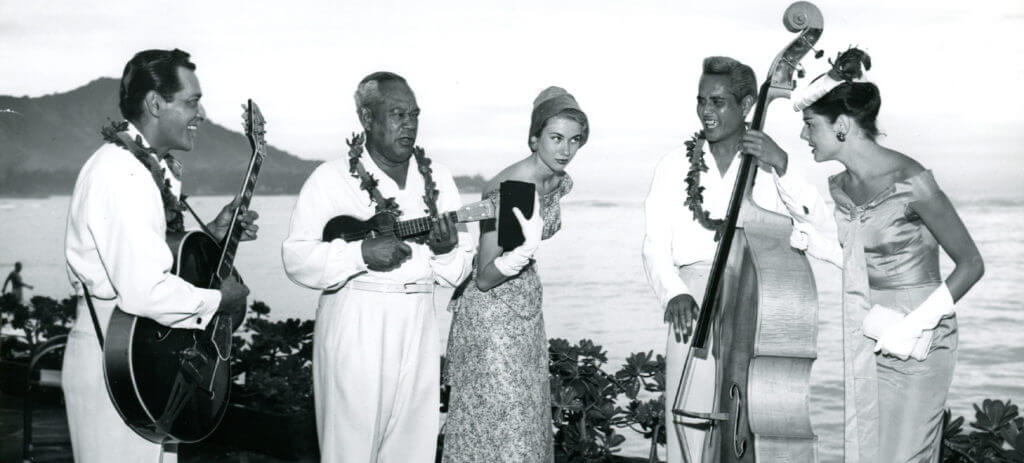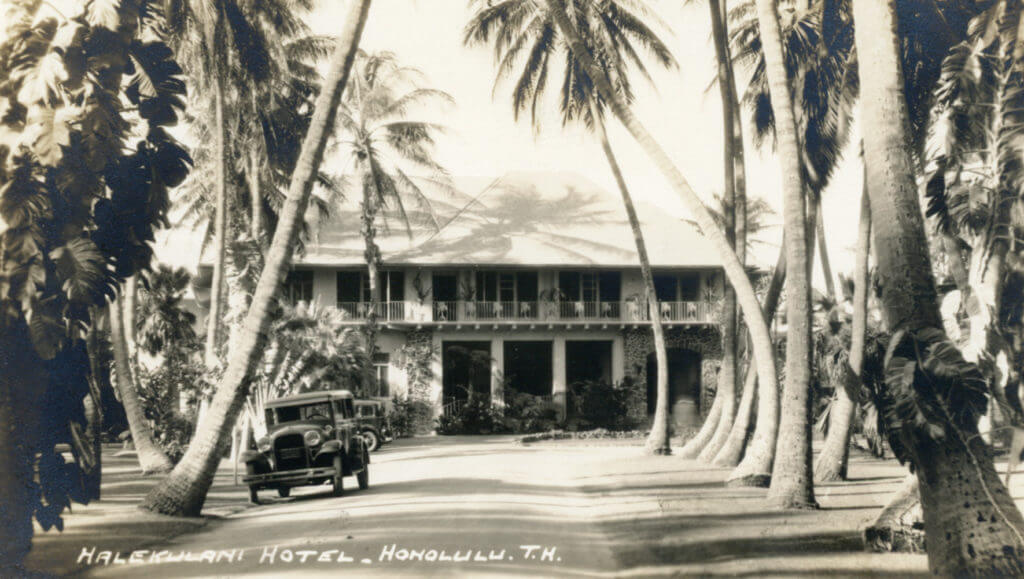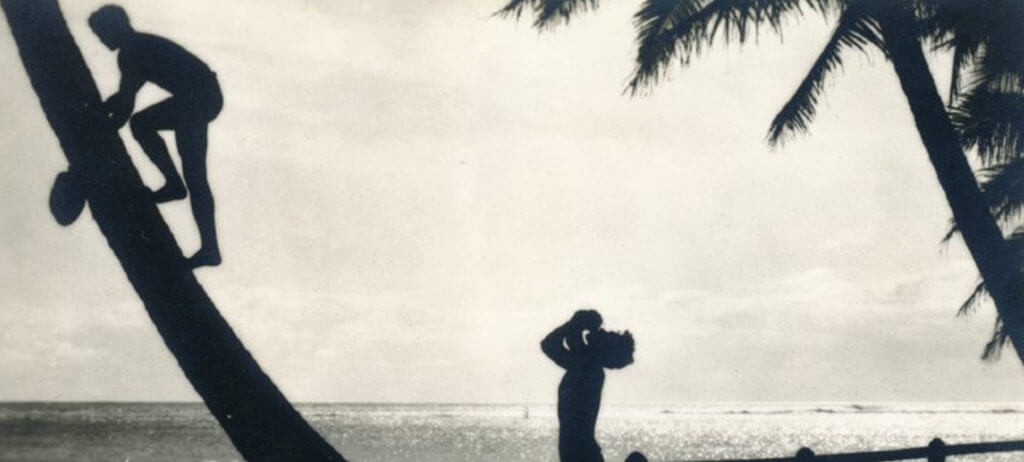The Halekulani Legacy
Those who came before us knew of Halekulani’s precious location on the shores of the Pacific.
Oral history handed down through the ages tells us that early Hawaiians viewed Waikiki as a place of hospitality and healing. The reef entrance in front of Halekulani, Kawehewehe, was once known for its healing properties with its freshwater springs. Kawehewehe translates to “the removal”
Our beachfront location has welcomed people since 1883 when the original owner, Robert Lewers built a two-story house on the site of what is now our main building. The fishermen of the area would bring their canoes onto the beach in front of the property to rest. So welcomed were they by the Lewers family that the locals named the location “house befitting heaven” or Halekulani.

The original Halekulani began in 1907 as a residential hotel, owned by Robert Lewers. It consisted of a beachfront home and five bungalows.
In 1917, Juliet and Clifford Kimball purchased the hotel, expanded it and established it as a stylish resort for vacationers, and gave it the name the locals originally bestowed on it, Halekulani.
In the 1930s, the original home was replaced with a plantation-mansion styled Main Building with a high-pitched hip roof to catch the cooling trade winds. Also known as a “Dickey Roof, it is a trademark of Hawaii’s legendary architect C.W. Dickey, and is continued today in Halekulani’s architecture.
The hotel was sold following the passing of the Kimballs in 1962. Almost 20 years later, it was purchased by what is now the Honolulu-based Halekulani Corporation. The hotel was closed and rebuilt as the existing 453-room property.
Today, our staff, our location and our hospitality reflect this original, Hawaiian welcome that defined the property. Regularly considered to be the finest hotel in Honolulu, and a destination for honeymoons in Hawaii, our hotel is more than a series of rooms and suites. It’s a spirit that defines your time with us. We invite you to discover the intangible magic of our destination.

Stories of Halekulani
At our Waikiki resort hotel, we are rich in history, in stories and in places of interest.
History and a legacy of excellence surround you. It begins at the entrance off Lewers Street, where two massive stone Mahiole, or sculptures, each weighing seven tons, represent the feather helmet once worn by Hawaiian royalty and sets a regal theme befitting Halekulani.
Overlooking the ocean, the over century-old kiawe tree has been a defining element of the property since its inception. Its long, slender branches provide a canopy of shade, and illustrate the Hawaiian meaning of kiawe, “to sway”.
Different versions of the tree’s origins exist. One of the more credible stories is from a letter in the hotel archives. It tells of Florence Hall, who was born in 1884 in a building that was situated close to today’s House Without A Key. She was about three years old when her father, William Wisner Hall, planted a tiny kiawe sapling held securely by a bamboo stake in the yard facing the ocean. At this time, the yard extended an additional 30 feet toward the ocean, and beyond that, there was another 25 feet of sandy beach.

Owners and guests gathered to discuss events of the day under the tree, and the writer Earl Derr Biggers would meet with the owner Clifford Kimball, and Chang Apana, a detective of the Honolulu Police Department. Apana’s stories were so captivating and colorful that they inspired Biggers to create the character Charlie Chan. His first novel, House Without a Key, became a series of successful mystery books and movies. Our dining area, House Without A Key is named after the novel inspired by its location.
In August 20, 2016, our iconic Kiawe tree, which is over 130 years old, “fell” to its current position. We are grateful that the way that the tree fell allowed it to continue to thrive.
According to Arborist Steve Nimz, “it was surprising the current position of the tree could not have fallen more perfect as it allows for pedestrian access, new growth from the roots and the tips of the branches. The tree is doing quite well with its existing root structure.”
Kiawe Trees in general are very hearty. They are grown in different areas, mostly be the beach, where you see many trees uprooted laying in the sand, however these trees persist and continue to grow. We hope that our iconic tree will remain in its current position for another 130 years.
For more on Halekulani’s rich Legacy, visit our blog.